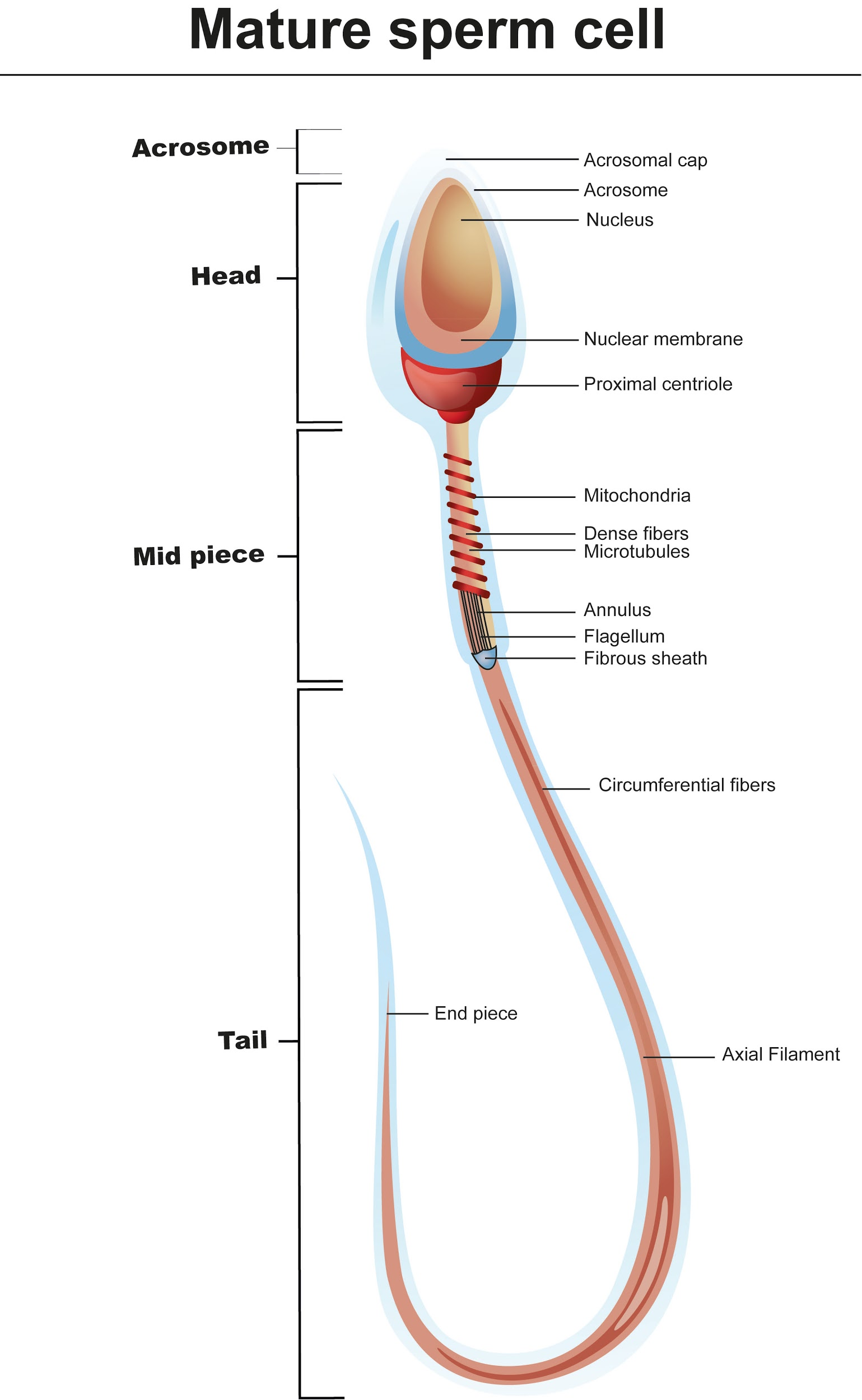
Proximal centriole is located in which part of the sperm?
(a)Tail
(b)Acrosome
(c) Middle part
(d)In the depression of the nucleus
Answer
556.5k+ views
Hint: Sperm is differentiated into the head, middle part, and tail. The human sperm has two Centrioles; Proximal and distal Centrioles. The proximal centriole is located in a specific structure, which carries genetic material.
Complete answer:
The bowl-shaped depression of the sperm nucleus i.e. the centriolar fossa has a proximal centriole. The Head consists of a nucleus carrying DNA and protein. The human sperm neck contains two centrioles. The proximal centriole is found just near the head base. The distal centriole is located further from the head, attached to the base of the axoneme. The proximal centriole serves as the microtubule-organizing center after fertilization. They accumulate centrosomal components from the oocyte to form the sperm aster, zygote aster, and mitotic apparatus after fertilization. The middle part and tail of sperm have axial filament with the 9+2 arrangement of microtubules.
Additional Information:
- The sperm neck contains centrioles that form the cilium of the sperm, and after fertilization form the major microtubule-organizing center of the zygote.
So, the correct answer is 'In the depression of the nucleus'.
Note:
-A small cone-shaped acrosomal vesicle projects from the cell surface in close association with the flagellum and associated distal centriole.
-A sperm cell consists of two parts, the head, and the tail. The overall structure of the sperm makes it perfectly designed to carry out its function.
-The most important function of the sperm is to pass on the necessary biological information required to produce a new organism.

Complete answer:
The bowl-shaped depression of the sperm nucleus i.e. the centriolar fossa has a proximal centriole. The Head consists of a nucleus carrying DNA and protein. The human sperm neck contains two centrioles. The proximal centriole is found just near the head base. The distal centriole is located further from the head, attached to the base of the axoneme. The proximal centriole serves as the microtubule-organizing center after fertilization. They accumulate centrosomal components from the oocyte to form the sperm aster, zygote aster, and mitotic apparatus after fertilization. The middle part and tail of sperm have axial filament with the 9+2 arrangement of microtubules.
Additional Information:
- The sperm neck contains centrioles that form the cilium of the sperm, and after fertilization form the major microtubule-organizing center of the zygote.
So, the correct answer is 'In the depression of the nucleus'.
Note:
-A small cone-shaped acrosomal vesicle projects from the cell surface in close association with the flagellum and associated distal centriole.
-A sperm cell consists of two parts, the head, and the tail. The overall structure of the sperm makes it perfectly designed to carry out its function.
-The most important function of the sperm is to pass on the necessary biological information required to produce a new organism.

Recently Updated Pages
Master Class 12 English: Engaging Questions & Answers for Success

Master Class 12 Economics: Engaging Questions & Answers for Success

Master Class 12 Social Science: Engaging Questions & Answers for Success

Master Class 12 Maths: Engaging Questions & Answers for Success

Master Class 12 Chemistry: Engaging Questions & Answers for Success

Master Class 12 Business Studies: Engaging Questions & Answers for Success

Trending doubts
What are the major means of transport Explain each class 12 social science CBSE

Which are the Top 10 Largest Countries of the World?

Draw a labelled sketch of the human eye class 12 physics CBSE

Explain sex determination in humans with line diag class 12 biology CBSE

The pH of the pancreatic juice is A 64 B 86 C 120 D class 12 biology CBSE

Explain sex determination in humans with the help of class 12 biology CBSE




